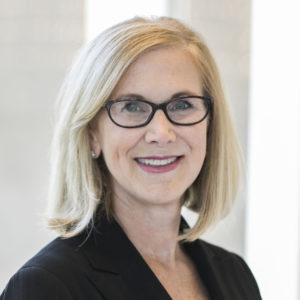In This Issue:
- AMN Healthcare Names New President and CEO
- Nominations for the 2022 Locum Tenens Providers of the Year Award Campaign Start Today!
- All Star Healthcare Solutions® Promotes Lynnette Odom to Divisional Vice President
- 2022 Primary Care Trends for Physicians and Advanced Practitioners
- SIA Healthcare Staffing Summit: Talent Crisis Will Continue
- Hospitals Pivot to New Tactics to Recruit, Retain Staff
- Hospitals Headed for Worst Financial Year in Decades
- Icon Exchange Launches All-in-One Credentialing Wallet for Healthcare Professionals
- Whitepaper: Should Organizations be Concerned with Recruitment and Retention?
- Socially Speaking: Social Posts of Note from Hayes, Weatherby, LocumTenens.com & More
- More Physicians Unionize in the Face of Burnout, Consolidation
AMN Healthcare Names New President and CEO
(Edited from AMN news release, 10/31/2022)
 AMN Healthcare (NYSE: AMN) has announced Cary Grace as the company’s next president and chief executive officer. She will succeed Susan Salka, who announced her retirement earlier this year.
AMN Healthcare (NYSE: AMN) has announced Cary Grace as the company’s next president and chief executive officer. She will succeed Susan Salka, who announced her retirement earlier this year.
“The AMN Board of Directors was deeply committed to selecting a proven executive who will continue AMN’s exceptional growth and impact, while also honoring our incredible culture,” Chairman Doug Wheat said. “Cary stands out as a leader who will build upon our operational and organizational strengths to ensure AMN’s outstanding performance now and for years to come.”
Grace’s proven track record of leading dynamic, client-centric businesses positions her to lead AMN into a new era of post-pandemic healthcare. She is the former CEO of Global Retirement, Investment, and Human Capital at Aon, a $2-billion annual revenue business that provides risk management, retirement, health and human capital consulting services with more than 10,000 employees serving 10,000 clients.
Grace led Aon’s enterprise client management and oversaw the integration of all acquisitions for the company. Prior to joining Aon in 2011, she spent more than 14 years at Bank of America, where she led several institutional and private banking businesses, including the $9-billion Mass Affluent Client Business. Her leadership extends to holding both corporate and nonprofit board positions, including State Farm and the Rush University Medical Center Board of Trustees.Grace is a passionate advocate for environmental, social, and governance issues, causes closely tied to AMN’s purpose and values. She has been a prominent voice in the business community, launching programs to support both mentorship and sponsorship at Aon, while serving on the boards of The Chicago Network and the CEO Advisory Council of the Diversity Project North America. Grace will be relocating to Dallas with her husband when she begins her role.
After 32 years with AMN, including more than 17 at the helm as CEO, Susan Salka announced her retirement in March 2022. She will stay on as AMN’s CEO and a board member until Grace assumes the role on November 28.
AMN delivers more than $4 billion in annualized revenue and has an enterprise value of approximately $6 billion.
Nominations for the 2022 Locum Tenens Providers of the Year Award Campaign Start Today!
Locumpedia recently announced its first annual Locum Tenens Providers Of The Year Award Campaign for 2022.
This campaign reinvigorates the former Locum Life magazine’s Locum Tenens Providers of the Year Award, which brought the industry together to celebrate locum tenens providers and commend the quality healthcare they provide to patients, while keeping locum tenens at the forefront of the medical community.
We feel unity is needed today and are excited to help the industry recognize the cream of the crop.
Nominations start today and will be accepted until January 13, 2023. The 2022 Locum Tenens Providers of the Year Award will be announced at the annual NALTO/NAPR conference on February 5, 2023.
Interested in nominating a provider? Any authorized representative (recruiter, account manager, credentialing staff, accounting staff, or leadership team) from a locum tenens staffing agency can submit a provider nomination. For more details check out the award details page.
Don’t wait: Submit your nominations today!
All News Is Locums
All Star Healthcare Solutions Promotes Lynnette Odom to Divisional Vice President
(Edited from All Star Healthcare Solutions blog, 10/27/2022)
All Star Healthcare Solutions®, recently announced the promotion of Lynnette Odom to divisional VP of Learning and Development, Marketing and Communications.
In her new role, Odom will focus further on cultivating a high-performance workforce, including advancing the company’s award-winning learning and development programs. With expert industry knowledge she will continue to guide marketing and communications endeavors, helping All Star establish the company as an industry leader while attracting and retaining clients, providers, and quality agency staff.
“Lynnette embodies the All Star spirit. Her absolute dedication to providing our people with the tools to succeed has created a workforce [that] consistently delivers [for] healthcare facilities, providers, various partners, and our people,” CEO Keith Shattuck said.
All Star President Ken Bernstein added, “Lynnette’s experience and insight will be invaluable to our leadership team as we continue to grow. She is intricately involved in virtually every touchpoint of All Star, and her servant leadership style stands out.”
Odom joined All Star in 2017, bringing more than 25 years of experience in healthcare staffing and more than 15 years of experience in training and talent development.
Fluent in American Sign Language, she has volunteered for advocacy and community outreach projects in South Florida that benefit the deaf and their families.

2022 Primary Care Trends for Physicians and Advanced Practitioners
(Edited from Medicus Healthcare Solutions Blog, 10/24/2022)
The demand for primary care physicians and advanced practitioners (PCPs) continues to soar. Staff shortages vary across geography, and virtual care positions are becoming increasingly sought after. We’ve compiled a brief list of current primary care trends for you:
Telehealth
Work from home and help your patients at the same time? Telehealth offers the best of both worlds. Telehealth work offers a sustained revenue stream while allowing you to see patients across the United States. There is also less exposure to illnesses and infections. Because of its many benefits, telehealth positions can be hard to uncover for PCPs. If you are looking for telehealth opportunities, start your search now!
It is important to note that you typically need to be licensed in the state where the patient receives your services. We recommend applying for the Interstate Medical Licensure Compact (IMLC) because this simplifies the cross-state licensing requirements. To learn more, contact Medicus, to speak with someone experienced with medical licensing.
Primary Care Shortage
Illinois, Massachusetts, New York, Pennsylvania, and Texas are experiencing the greatest PCP shortages. By 2034, the Association of American Medical Colleges estimates the US could face a shortage of up to 124,000 physicians. Demographics — specifically our growing and aging population — continue to be the leading factors driving increased demand for PCPs.
The resulting burnout affects physicians and advanced practitioners across all specialties. However, PCPs experience higher-than-average rates.
Licensing Timelines Change by State
Locum tenens work gives PCPs the flexibility to overcome many of the above challenges, but there are important considerations to understand. The licensing process can last three to six months. Further, you can expect 30 to 90 days for credentialing. For these reasons, it’s vital you plan in advance and consider what type of locum tenens schedule and patient demographics are right for you (for instance, weekdays versus weekends).
The Healthcare Staffing Story
SIA Healthcare Staffing Summit: Talent Crisis Will Continue
(Edited from SIA Daily News, 11/4/2022)
On Wednesday, November 2, executives from five large US staffing firms discussed the continuing healthcare staffing shortage at Staffing Industry Analysts’ Healthcare Staffing Summit in Houston.
SIA quoted Cross Country Healthcare CEO John Martins as noting that this “crisis” isn’t new; rather, it’s been happening for 20 years.
Martins cited statistics from the World Health Organization indicating that there are only 13 million nurses in the world, while 27 million are needed to meet the current patient needs. Thus, the world has fewer than half the number of nurses needed today.
MedPro Healthcare Staffing CEO Liz Tonkin suggested international nurses as one solution. “If you look at other countries, the golden ticket is to come to the United States,” Tonkin said. “Part of our issue in the United States is we’ve made immigration so difficult.”
However, Tonkin noted that increasing the percentage of foreign-born nurses would be a multi-year process.
Other staffing industry executive panelists included Aya Healthcare CEO Alan Braynin, AMN Healthcare Group President & COO James Taylor, and Medicus Healthcare Solutions CEO Robert Dickey. SIA President Barry Asin moderated the panel, introducing a discussion of the executives’ projections for five years from now.
Aya’s Braynin noted, “I think it’s a misnomer to say there’s a nursing shortage. There’s a shortage of nurses wanting to work at the bedside. And there are some legitimate solutions that can be put on the table, but it takes a change in the way we think about the problem…”
Meanwhile, AMN’s Taylor highlighted the growing physician shortage, suggesting several possible solutions, while Dickey of Medicus focused on the locum tenens space. Dickey noted that the locum industry faces challenges similar to those ongoing in the nursing field, while witnessing post-pandemic provider burnout and experiencing effects of an aging physician workforce.
Hospitals Pivot to New Tactics to Recruit, Retain Staff
(Edited from Healthcare Dive article by Hailey Mensik,10/26/2022)
Health systems are doubling down on their efforts to keep current employees while attracting an increasing number of new staff as the COVID-19 pandemic continues.
Many have dealt with burned-out workers quitting, retiring or taking higher-paying traveling jobs over the past two-and-a-half years. The deluge has spurred some systems to revamp their hiring methods, boost wages and benefits, and provide other offerings to attract needed staff.
Registered nursing positions have been some of the toughest for hospitals to fill throughout the pandemic. More recently though, hospitals are struggling to find enough nursing assistants, food service and environmental workers, and other more-entry-level staff.
“We’re not just competing among healthcare organizations anymore, which used to be the case. Now we’re really competing in the broader labor market, with hotels and restaurants and other industries,” Geisinger Chief Nursing Officer Janet Tomcavage said.
Competing with Retail Businesses
The nonprofit, 10-hospital system based in Pennsylvania has seen staff in housekeeping services, environmental and food services, and some nursing assistants leave for jobs at Walmart, Target, and Starbucks, to name a few, “who are aggressively changing their workforce approaches as well,” Tomcavage said.
Persistent shortages of other clinical staff remain with nurses, respiratory therapists, and ultrasound laboratory technicians. That’s leading to a gap in experience, as the tenure of nurses, particularly on the inpatient side, has dropped, she said.
“It’s not just the person. It’s the wealth of knowledge and experience that you lose,” she said.
Consequently, retaining current staff by making them feel engaged and valued is now a key part of Geisingers’ efforts to strengthen its workforce.
“One of the first categories that we paid attention to was compensation and making sure that we really are rewarding nurses for the work that they do,” she said. The system offered retention bonuses to entice staff to stay.
Another key tool is conducting “stay interviews” rather than exit interviews, where nurses and managers can discuss why nurses want to stay in their roles, and what additional support may be needed for them to continue doing that work.
Hospitals Headed for Worst Financial Year in Decades
(Edited from Health Affairs story by Andrew Sudimack & Daniel Polsky, 10/25/2022)
US hospitals and healthcare systems are on track for their worst financial year in decades, according to Kaufman Hall’s latest National Hospital Flash Report, published in September.
The report indicates median hospital operating margins were negative cumulatively through the first eight months of 2022.
For context, in 2020, despite unprecedented losses during the initial months of COVID-19, hospitals still reported median eight-month operating margins of 2%—although these were buoyed largely by federal aid from the Coronavirus Aid, Relief, and Economic Security (CARES) Act.
The recent, historically poor financial performance results from significant pressures on multiple fronts.
Labor shortages and supply-chain disruptions have fueled a dramatic rise in expenses. Because of annually fixed payment rates, hospitals have been unable to pass these expenses to payers. At the same time, diminished patient volumes—especially in more profitable service lines—have constrained revenue, and declining markets have generated substantial investment losses.
While it’s tempting to view these challenges as transient shocks, a rapid recovery seems unlikely.
As a result, hospitals will be forced to take aggressive cost-cutting measures to stabilize balance sheets. For some, this will include department or service line closures; for others, closing altogether. As these scenarios unfold, ultimately, the costs will be borne by patients, in one form or another.
Difficult Road To Financial Recovery
Hospital margins will face continued headwinds in the coming years.
First, the primary driver of rising hospital expenses is a shortage of labor—in particular, nursing labor—which will likely worsen in the future. Since the start of the pandemic, hospitals have lost a total of 105,000 employees, and nursing vacancies have more than doubled.
In response, hospitals have relied on expensive contract nurses and extended overtime hours, resulting in surging wage costs. While this issue was exacerbated by the pandemic, the national nursing shortage is a decades-old problem that—with a substantial portion of the labor force approaching retirement and an insufficient supply of new nurses to replace them—is projected to reach 450,000 by 2025.
Second, while payment rates will eventually adjust to rising costs, this is likely to occur slowly and unevenly.
Medicare rates, which are adjusted annually based on an inflation projection, are already set to undershoot hospital costs. Given that Medicare doesn’t issue retrospective corrections, this under-adjustment will become baked into Medicare prices for the foreseeable future, widening the gap between costs and payments.
This leaves commercial payers to make up the difference. Commercial rates are typically negotiated in three- to five-year contract cycles, so hospitals on the early side of a new contract may be forced to wait until renegotiation for more substantial pricing adjustments.
“Negotiation” is also the operative term here, as payers are under no obligation to offset rising costs. Instead, it is likely that the speed and degree of price adjustments will be dictated by provider market share, leaving smaller hospitals at a further disadvantage.
This trend was exemplified during the 2008 financial crisis, in which only the most prestigious hospitals were able to adjust pricing significantly in response to historic investment losses.
HDHP Growth Affects Consumer Decisions
Finally, economic uncertainty and the threat of recession will create continued disruptions in patient volumes, particularly with elective procedures.
Although healthcare has historically been referred to as “recession-proof,” the growing prevalence of high-deductible health plans (HDHPs) and more aggressive cost-sharing mechanisms have left patients more exposed to healthcare costs and more likely to weigh these costs against other household expenditures when budgets get tight.
While this consumerist response is not new—research on previous recessions has identified direct correlations between economic strength and surgical volumes—the degree of cost exposure for patients is historically high. Since 2008, enrollment in HDHPs has increased nearly four-fold, now representing 28 percent of all employer-sponsored enrollments.
There’s evidence that this exposure is already impacting patient decisions. Recently, one in five adults reported delaying or forgoing treatment in response to general inflation.
These factors altogether suggest the current financial pressures are unlikely to resolve in the short term. As losses mount and cash reserves dwindle, hospitals ultimately will need to cut costs to stem the bleeding—which presents both challenges and opportunities.
To read about the consequences for cost, quality, and care access–and about productive cost reduction potential and the need for a measured policy response–click here.
Tools to Try/News to Use
Icon Exchange Launches All-in-One Credentialing Wallet for Healthcare Professionals
(Edited from BusinessWire news release, 11/2/2022)
Icon Exchange, a service-centered healthcare staffing agency, recently announced the launch of a new mobile application, available for iOS, for Android devices, and as a web application. The Icon Exchange mobile app offers centralized management of vital credentials needed for locum tenens and permanent healthcare employment, serving as a safe and secure storage wallet.
Developed by healthcare professionals for healthcare professionals, the Icon Exchange mobile app is designed to expedite and minimize the credentialing process. The wallet safely stores all professional credentials in a secure platform and provides reminders for upcoming renewals. The interface provides a simple solution for requesting information from, or sharing qualifications with, contacts, reducing the barriers between professionals and potential employers.
“As active practitioners in healthcare and staffing management, we recognized the need for a ‘turnkey 1099’ solution to address the accumulation of credentialing data,” Icon Exchange CEO Christopher Hoeman said. “By removing roadblocks caused by administrative processing, the Icon Exchange app provides a convenient solution that empowers healthcare professionals to start working sooner.”
Icon Exchange aims to simplify processes so that healthcare teams can concentrate on patient care. The Icon Exchange mobile app is available now for free download. For more information, visit https://www.iconexchange.com/app/.
About Icon Exchange
Led by a group of healthcare professionals, Icon Exchange is a service-centered healthcare staffing agency for all medical specialties. Established in 2019, Icon Exchange began with the goal of improving the end-to-end experience of locum tenens, per diem, permanent job seekers, and healthcare facilities alike. Icon Exchange’s support and resources are designed to ease the credentialing process for healthcare professionals in all stages of their careers. For more information, visit https://www.iconexchange.com.
Whitepaper: Should Organizations be Concerned with Recruitment and Retention?
(Edited from Becker’s Hospital Review, 11/10/2022)
With the gig economy taking a bite out of your workforce, you have to stay ahead of hiring trends. Read the Gartner Peer Insights Report to learn just how much you should be concerned with recruitment and retention.
While flexibility is an incentive to retain employees, some industries can’t offer 100% remote options for their frontline employees. Given the competitive hiring environment, how much should healthcare, retail, and manufacturing be concerned with recruitment and retention, and how do they maintain a healthy workforce?
Gartner Peer Insights and Firstup surveyed IT, HR and internal communications leaders in the healthcare, retail, and manufacturing industry to see how communication and the digital employee experience impact an organization’s ability to recruit and retain its workforce in the current climate.
Read this report to learn:
- Where industry leaders are spending their recruiting budgets this year.
- How they rank the value of employee engagement in helping retain a quality workforce.
- What they believe really matters to their workers (hint: it’s not just about the money).
Please fill out the form (right side of landing page) to download the whitepaper.
Socially Speaking
From Twitter
From Facebook/Instagram
How ‘Bout This?
More Physicians Unionize in the Face of Burnout, Consolidation
(Edited from Axios article by Arielle Dreher,11/7/2022)
Burnout and health industry consolidation are driving more doctors and doctors-in-training to unionize to demand better pay, benefits, and working conditions.
Driving the news: More than 1,200 resident physicians and interns at Montefiore Medical Center last week asked the Bronx, NY hospital to recognize their bargaining unit after an organizing vote. It was another sign that 80-plus hour work weeks, combined with inflation and other stressors, are prompting more doctors to demand a seat at the table.
The Committee of Interns and Residents, part of the Service Employees International Union, said it had a record year organizing unions at five hospitals across the country, and now has more than 22,000 members.
Doctors have also joined with other big labor organizations, including the American Federation of State, County and Municipal Employees, and the American Federation of Teachers.
By the numbers: There were more than 67,000 physician union members, or about 7% of all practicing US doctors, as of 2019, according to the American Medical Association. The numbers have likely increased since then, in response to hospital consolidation and more physicians working as employees of a health system or other provider.
The average US resident physician’s salary in 2021 was $64,000, according to Medscape. Younger doctors who are unionizing say that’s not enough to contend with general inflation and the cost of living, especially in markets like New York and Los Angeles. The workload and residents with student loan debt are also factors, per Fierce Healthcare.
The Accreditation Council for Graduate Medical Education has set a maximum number of hours a resident can work each week at 80 hours.
Residents are not only asking for higher wages but for better working conditions, from longer breaks and meal options to moving stipends and wages that make living near their hospitals affordable.
Yes, but: There are concerns that doctors taking collective action could undermine public trust and jeopardize patient safety. And the prospect of physicians walking off the job nearly became reality over the summer, during a labor dispute involving 1,300 residents and fellows at three big Los Angeles County hospitals.
Hospitals face complex financial calculations that go beyond paying for hours worked, particularly when it comes to their trainees, Association of American Medical Colleges chief healthcare officer Janis Orlowski said in an article posted by AAMC.
“On one hand, residents work long hours and contribute significantly to the care of patients. For this they receive a stipend,” Orlowski said. “On the other hand, they’re apprentices who are receiving very valuable training that is expensive for institutions to provide.”
The intrigue: So far, Montefiore Medical Center hasn’t recognized the residents’ union and voluntarily chose not to recognize it as of Friday.
“The National Labor Relations Act guarantees our residents the right to determine whether or not they should be represented by a union. We respect their right to make that decision through a secret ballot process, free from outside influence,” the hospital said in a statement issued on Friday.
What they’re saying: “For me as a provider to bring solutions for some of those gaps I am seeing, I need a voice and seat at the table, and to be able to express what I’m seeing to people who have power to make those decisions,” Sejal Shah, a second-year primary care and social medicine resident at Montefiore Medical Center, told Axios.
- Physician inquiries to the Committee of Interns and Residents have risen to double or triple the rate before the pandemic, Sunyata Altenor, communications director of the committee, told Axios.
- Residents like Isuree Katugampala, a third-year pediatrics resident at Montefiore Medical Center, had to help with the COVID response during the pandemic due to the surge of patients and staffing shortages.
- Difficulties securing protective gear and vaccines during the pandemic underscored the need for more formal organizing, the Bronx-based residents said.
Zoom out: Physicians who aren’t in supervisory roles have the right to bargain collectively — and experts say the pandemic experience and business conditions will encourage more activity.
- “I believe doctors will find a way to unionize,” John August, director of health care labor relations at Cornell School of Labor and Industrial Relations, told Axios.
- Antitrust laws prevent most clinicians from unionizing if they are independent practitioners, but August thinks that like resident physicians, providers will likely begin to organize in the coming years.
- Resident physician unions are unique in that members will cycle through only for the duration of their residencies.
- “I probably will not see the benefits of this union, and I am fully okay with that knowing I contributed and tried to play a part, with my colleagues, that will be better for us and our patients in the long run,” Katugampala said.
The bottom line: As health systems move beyond COVID-19 and rely less on traveling and temporary staff, relations with doctors will become a pivotal business barometer.











